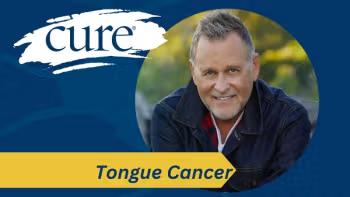
Momentum Continues for Opdivo in Head and Neck Cancer
The FDA granted Opdivo (nivolumab) a breakthrough therapy designation to treat certain patients with head and neck cancer.
After an open-label phase 3 study, CheckMate-141, Opdivo (nivolumab) was granted a breakthrough therapy designation by the FDA for patients with recurrent or metastatic squamous cell carcinoma of the head and neck (SCCHN) following a platinum-based therapy, according to Bristol-Myers Squibb, the developer of the PD-1 inhibitor.
The study demonstrated an improvement in overall survival (OS) with Opdivo versus investigator's choice of therapy. Median OS with Opdivo was 7.5 months compared with 5.1 months with investigator's choice of therapy. The one-year OS rates were 36 percent with Opdivo compared with 16.6 percent for investigator’s choice.
“The breakthrough therapy designation for Opdivo in advanced squamous cell carcinoma of the head and neck underscores the immediate need for new treatment approaches for this devastating disease, and reflects our commitment to advancing Immuno-Oncology research with the goal of addressing hard-to-treat cancers and changing survival expectations for patients,” Jean Viallet, Global Clinical Research Lead, Oncology, Bristol-Myers Squibb, said in a statement.
The CheckMate-141 study was initiated in May 2014 and was not scheduled to complete until October 2016; however, it was stopped early after an independent monitoring panel determined the primary endpoint was met with the anti—PD-1 agent versus the investigator's choice of therapy. The primary endpoint was OS, with secondary outcome measures focused on response rates and progression-free survival (PFS), although these findings have not yet been presented.
In the trial, 361 patients with cancer of the oral cavity, pharynx or larynx were randomized in a 2-1 ratio to receive Opdivo (240 patients) or investigator's choice of Erbitux (cetuximab), Trexall (methotrexate) or Taxotere (docetaxel) (121 patients). Opdivo was administered intravenously at three mg/kg every two weeks. Erbitux was administered at 400 mg/m2 for the first dose followed by 250 mg/m2 weekly. Trexall was administered at 40 mg/m2 weekly. Taxotere was administered at 30 mg/m2 weekly.
The median age of patients in the trial was 60 years, and 31.3 percent were at least 65 years of age. The majority of patients were male (83 percent), Caucasian (83 percent), and had an ECOG PS of one (78.4 percent). Most patients received at least two prior systemic therapies (54.8 percent), and over 90 percent had received prior radiation therapy. Patients were stratified based on prior Erbitux therapy, and HPV status was known for 49.3 percent of patients.
Improvements in OS with Opdivo varied, based on HPV status. In the HPV-positive group, the median OS was 9.1 months with Opdivo compared with 4.4 months with investigator's choice. In the HPV-negative arm, the median OS with Opdivo was 7.5 versus 5.8 months.
PD-L1 expression, which was available for 72 percent of enrolled patients, was associated with response to Opdivo. Those with PD-L1 expression on at least 1 percent of cells experienced a median OS of 8.7 months with Opdivo compared with 4.6 months in the control arm. In those with PD-L1 expression of less than 1 percent, the median OS was 5.7 versus 5.8 months, for Opdivo and the control arm, respectively.
All-grade AEs were experience by 58.9 percent of patients treated with Opdivo compared with 77.5 percent with investigator's choice. The most common grade 3/4 AEs with Opdivo were fatigue (2.1 percent), anemia (1.3 percent) and asthenia (0.4 percent). For investigator's choice, the most common grade 3/4 AEs were anemia (4.5 percent), alopecia (2.7 percent), fatigue (2.7 percent), diarrhea (1.8 percent), asthenia (1.8 percent) and mucosal inflammation (1.8 percent).
There were two treatment-related deaths in the Opdivo arm related to pneumonitis and hypercalcemia. In the investigator's choice arm, there was one death related to lung infection.
“What we think is most important about this trial is the number of patients who survive for a year, which is doubled with Opdivo in comparison with investigator’s choice. There was a 20 percent absolute improvement, which is something that has never been seen in this patient population before,” said lead investigator Maura Gillison, Jeg Coughlin Chair of Cancer Research, The Ohio State University Wexner Medical Center, when she presented the data at the 2016 AACR Annual Meeting. “Opdivo represents a new standard of care option for patients with relapsed/metastatic head and neck cancer after platinum-based chemotherapy.”
The breakthrough designation is meant to expedite the development of therapies that offer substantial benefits over existing option. Under the program, a rolling submission of data is allowed along with more communication with the FDA. Bristol-Myers Squibb initiated discussions with the FDA regarding potential approval for Opdivo in head and neck cancer when the study was stopped in late January.
A second phase 3 study is planned, to assess the frontline combination of Opdivo and Yervoy (ipilimumab) compared with standard of care for patients with recurrent or metastatic SCCHN. This trial plans to enroll 460 patients with dual primary endpoints of OS and PFS (NCT02741570).
Gillison ML, Blumenschein G, Fayette J, et al. Nivolumab Versus Investigator’s Choice (IC) for Recurrent or Metastatic (R/M) Head and Neck Squamous Cell Carcinoma (SCCHN): CheckMate-141. Presented at: AACR 2016 Annual Meeting, New Orleans; April 16-20, 2016. Abstract CT099.




